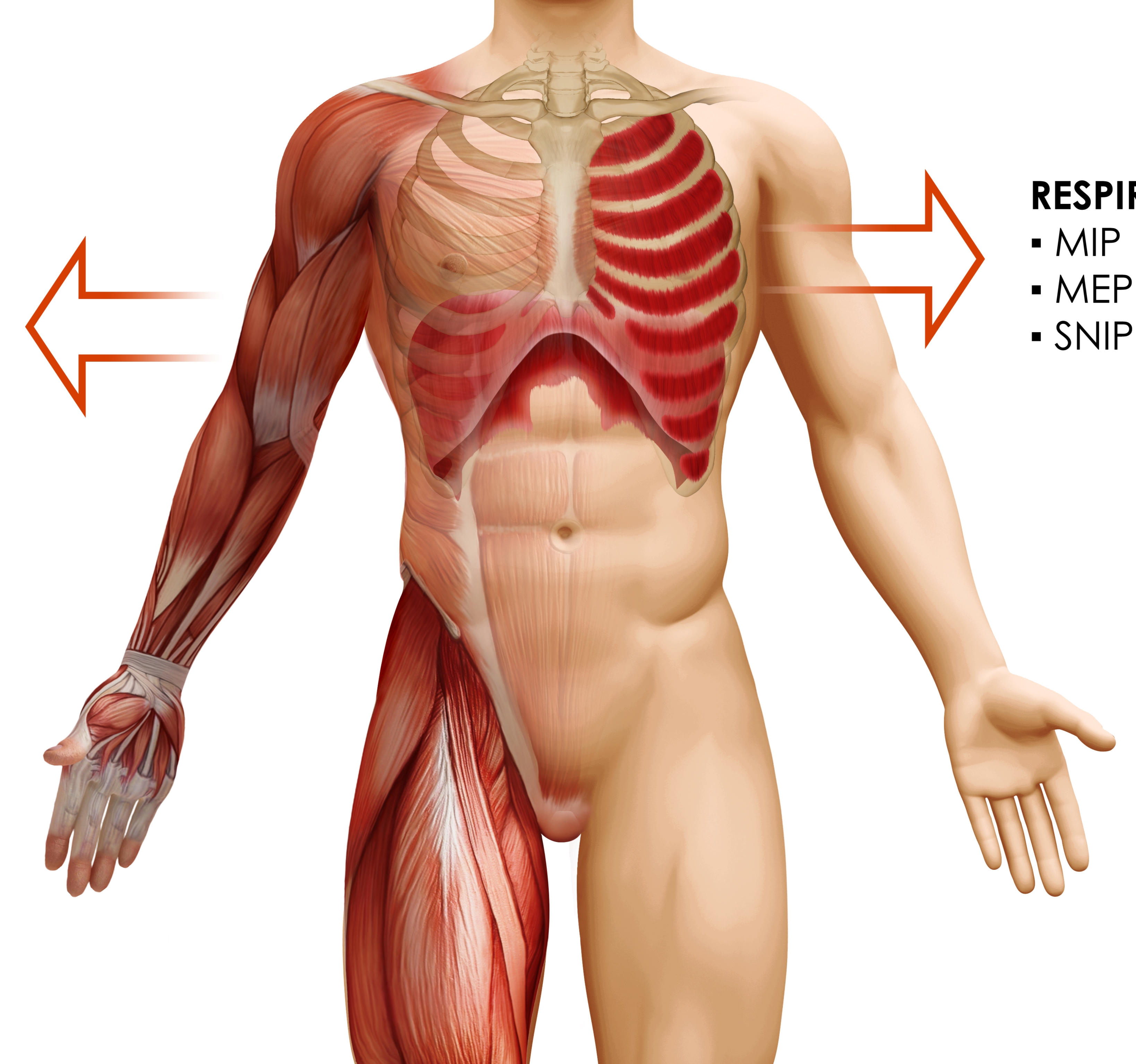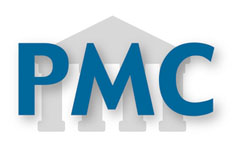Muscle training in patients with pulmonary hypertension. a narrative review
Abstract
Patients with pulmonary hypertension present limited tolerance to exercise and aerobic capacity, which is reflected in the reduction in peak oxygen consumption and functional performance. This intolerance to exercise has traditionally been attributed to cardiac and respiratory dysfunction. However, as it happens in other chronic diseases, lower-limb and respiratory muscle alterations are also involved in patients with pulmonary hypertension.
Increasing evidence suggests that physical exercise training is an efficient and safe strategy. The recommendation for light and moderate-intensity exercise is made within the framework of pulmonary rehabilitation, and its benefits have been previously described.
In diseases such as COPD, lower-limb muscle function, exercise tolerance and quality of life improve following exercise training. And just as with COPD, it is necessary to promote evidence-based interventions with pulmonary hypertension. This narrative review focuses on the evaluation, safety and efficacy of training the respiratory muscles and the muscles of upper and lower extremities in patients with pulmonary hypertension.
Authors
Downloads
Keywords
- Pulmonary hypertension
- muscle strength
- Muscle Weakness
- Exercise Tolerance
- Pulmonary Artery
- Walk Test
- Respiratory Muscles
- Pulmonary Disease, Chronic Obstructive
- Dyspnea
References
Galiè N, Humbert M, Vachiery JL, Gibbs S, Lang I, Torbicki A, et al. 2015 ESC/ERS Guidelines for the diagnosis and treatment of pulmonary hypertension: The Joint Task Force for the Diagnosis and Treatment of Pulmonary Hypertension of the European Society of Cardiology (ESC) and the European Respiratory Society (ERS): Endorsed by: Association for European Paediatric and Congenital Cardiology (AEPC), International Society for Heart and Lung Transplantation (ISHLT). Eur Heart J 2016;37:67-119. https://doi.org/10.1093/eurheartj/ehv317
Hoeper MM, Bogaard HJ, Condliffe R, Frantz R, Khanna D, Kurzyna M, et al. Definitions and diagnosis of pulmonary hypertension. J Am Coll Cardiol 2013;62. https://doi.org/10.1016/j.jacc.2013.10.032
González-Saiz L, Fiuza-Luces C, Sanchis-Gomar F, Santos-Lozano A, Quezada-Loaiza CA, Flox-Camacho A, et al. Benefits of skeletal-muscle exercise training in pulmonary arterial hypertension: The WHOLEi+12 trial. Int J Cardiol 2017;231:277-83. https://doi.org/10.1016/j.ijcard.2016.12.026
Grünig E, Lichtblau M, Ehlken N, Ghofrani HA, Reichenberger F, Staehler G, et al. Safety and efficacy of exercise training in various forms of pulmonary hypertension. Eur Respir J 2012;40:84-92. https://doi.org/10.1183/09031936.00123711
Mainguy V, Maltais F, Saey D, Gagnon P, Martel S, Simon M, et al. Peripheral muscle dysfunction in idiopathic pulmonary arterial hypertension. Thorax 2010;65:113-7. https://doi.org/10.1136/thx.2009.117168
Barreiro E, Gea J. Respiratory and Limb Muscle Dysfunction in COPD. COPD 2015;12:413-26. https://doi.org/10.3109/15412555.2014.974737
Tobita K, Goda A, Nishida Y, Takeuchi K, Kikuchi H, Inami T, et al. Factors contributing to exercise capacity in chronic thromboembolic pulmonary hypertension with near-normal hemodynamics. J Heart Lung Transplant 2021;40:677-86. https://doi.org/10.1016/j.healun.2021.03.003
Aslan GK, Akinci B, Yeldan I, Okumus G. Respiratory muscle strength in patients with pulmonary hypertension: The relationship with exercise capacity, physical activity level, and quality of life. Clin Respir J 2018;12:699-705. https://doi.org/10.1111/crj.12582
Babu AS, Padmakumar R, Maiya AG. A review of ongoing trials in exercise based rehabilitation for pulmonary arterial hypertension. Indian J Med Res 2013;137:900.
Spruit MA, Singh SJ, Garvey C, Zu Wallack R, Nici L, Rochester C, et al. An official American thoracic society/European respiratory society statement: Key concepts and advances in pulmonary rehabilitation. Am J Respir Crit Care Med 2013;188. https://doi.org/10.1164/RCCM.201309-1634ST/SUPPL_FILE/EXECUTIVE_SUMMARY.PDF.
Liu X, Li P, Wang Z, Lu Y, Li N, Xiao L, et al. Evaluation of isokinetic muscle strength of upper limb and the relationship with pulmonary function and respiratory muscle strength in stable COPD patients. Int J Chron Obstruct Pulmon Dis 2019;14:2027. https://doi.org/10.2147/COPD.S214737
Highland KB, Crawford R, Classi P, Morrison R, Doward L, Nelsen AC, et al. Development of the Pulmonary Hypertension Functional Classification Self-Report: a patient version adapted from the World Health Organization Functional Classification measure. Health Qual Life Outcomes 2021;19. https://doi.org/10.1186/s12955-021-01782-0
Matura LA, McDonough A, Carroll DL. Health-related quality of life and psychological states in patients with pulmonary arterial hypertension. J Cardiovasc Nurs 2014;29:178-84. https://doi.org/10.1097/JCN.0b013e318275330d
Sancho-Muñoz A, Guitart M, Rodríguez DA, Gea J, Martínez-Llorens J, Barreiro E. Deficient muscle regeneration potential in sarcopenic COPD patients: Role of satellite cells. J Cell Physiol 2021;236:3083-98. https://doi.org/10.1002/jcp.30073
Larsen MR, Steenberg DE, Birk JB, Sjøberg KA, Kiens B, Richter EA, et al. The insulin-sensitizing effect of a single exercise bout is similar in type I and type II human muscle fibres. J Physiol 2020;598:5687-99 https://doi.org/10.1113/JP280475
Batt J, Ahmed SS, Correa J, Bain A, Granton J. Skeletal muscle dysfunction in idiopathic pulmonary arterial hypertension. Am J Respir Cell Mol Biol 2014;50:74-86. https://doi.org/10.1165/rcmb.2012-0506OC
Manders E, Ruiter G, Bogaard HJ, Stienen GJM, Vonk-Noordegraaf A, De Man FS, et al. Quadriceps muscle fibre dysfunction in patients with pulmonary arterial hypertension. Eur Respir J 2015;45:1737-40. https://doi.org/10.1183/09031936.00205114
Wüst RCI, Myers DS, Stones R, Benoist D, Robinson PA, Boyle JP, et al. Regional skeletal muscle remodeling and mitochondrial dysfunction in right ventricular heart failure. Am J Physiol Heart Circ Physiol 2012;302. https://doi.org/10.1152/ajpheart.00653.2011
Panagiotou M, Peacock AJ, Johnson MK. Respiratory and limb muscle dysfunction in pulmonary arterial hypertension: a role for exercise training? Pulm Circ 2015;5:424-34. https://doi.org/10.1086/682431
Carvalho RF, Castan EP, Coelho CA, Lopes FS, Almeida FLA, Michelin A, et al. Heart failure increases atrogin-1 and MuRF1 gene expression in skeletal muscle with fiber type-specific atrophy. J Mol Histol 2010;41:81-7. https://doi.org/10.1007/s10735-010-9262-x
Lecker SH, Goldberg AL, Mitch WE. Protein degradation by the ubiquitin-proteasome pathway in normal and disease states. J Am Soc Nephrol 2006;17:1807-19. https://doi.org/10.1681/ASN.2006010083
Fowler R, Jenkins S, Maiorana A, Gain K, O'Driscoll G, Gabbay E. Australian perspective regarding recommendations for physical activity and exercise rehabilitation in pulmonary arterial hypertension. J Multidiscip Healthc 2011;4:451. https://doi.org/10.2147/JMDH.S26617
Grünig E, Eichstaedt C, Barberà JA, Benjamin N, Blanco I, Bossone E, et al. ERS statement on exercise training and rehabilitation in patients with severe chronic pulmonary hypertension. Eur Respir J 2019;53. https://doi.org/10.1183/13993003.00332-2018
Koudstaal T, Wapenaar M, Van Ranst D, Beesems R, Van Den Toorn L, Van Den Bosch A, et al. The Effects of a 10-wk Outpatient Pulmonary Rehabilitation Program on Exercise Performance, Muscle Strength, Soluble Biomarkers, and Quality of Life in Patients With Pulmonary Hypertension. J Cardiopulm Rehabil Prev 2019;39:397-402. https://doi.org/10.1097/HCR.0000000000000443
Grünig E, MacKenzie A, Peacock AJ, Eichstaedt CA, Benjamin N, Nechwatal R, et al. Standardized exercise training is feasible, safe, and effective in pulmonary arterial and chronic thromboembolic pulmonary hypertension: results from a large European multicentre randomized controlled trial. Eur Heart J 2021;42:2284-95. https://doi.org/10.1093/eurheartj/ehaa696
Marvin-Peek J, Hemnes A, Huang S, Silverman-Loyd L, MacKinnon G, Annis J, et al. Daily Step Counts Are Associated with Hospitalization Risk in Pulmonary Arterial Hypertension. Am J Respir Crit Care Med 2021;204. https://doi.org/10.1164/rccm.202104-1035LE
Halliday SJ, Shi H, Brittain EL, Hemnes AR. Reduced free-living activity levels in pulmonary arterial hypertension patients. Pulm Circ 2019;9. https://doi.org/10.1177/2045894018814182
Sehgal S, Chowdhury A, Rabih F, Gadre A, Park MM, Li M, et al. Counting Steps: A New Way to Monitor Patients with Pulmonary Arterial Hypertension. Lung 2019;197:501-8. https://doi.org/10.1007/s00408-019-00239-y
Panagiotou M, Peacock AJ, Johnson MK. Respiratory and limb muscle dysfunction in pulmonary arterial hypertension: a role for exercise training? Pulm Circ 2015;5:424. https://doi.org/10.1086/682431
Saglam M, Arikan H, Vardar-Yagli N, Calik-Kutukcu E, Inal-Ince D, Savci S, et al. Inspiratory muscle training in pulmonary arterial hypertension. J Cardiopulm Rehabil Prev 2015;35:198-206. https://doi.org/10.1097/HCR.0000000000000117.
Spiesshoefer J, Herkenrath S, Mohr M, Randerath W, Tuleta I, Diller GP, et al. Diaphragm function does not independently predict exercise intolerance in patients with precapillary pulmonary hypertension after adjustment for right ventricular function. Biosci Rep 2019;39. https://doi.org/10.1042/BSR20190392
De Man FS, Van Hees HWH, Handoko ML, Niessen HW, Schalij I, Humbert M, et al. Diaphragm muscle fiber weakness in pulmonary hypertension. Am J Respir Crit Care Med 2011;183:1411-8. https://doi.org/10.1164/rccm.201003-0354OC
Kabitz HJ, Schwoerer A, Bremer HC, Sonntag F, Walterspacher S, Walker D, et al. Impairment of respiratory muscle function in pulmonary hypertension. Clin Sci (Lond) 2008;114:165-71. https://doi.org/10.1042/CS20070238
Peters EL, Campen JSJ. van, Groepenhoff H, Man FS de, Noordegraaf AV, Bogaard HJ. Bisoprolol and/or hyperoxic breathing do not reduce hyperventilation in pulmonary arterial hypertension patients. Pulm Circ 2021;11:204589402110578. https://doi.org/10.1177/20458940211057890.
Yasunobu Y, Oudiz RJ, Sun XG, Hansen JE, Wasserman K. End-tidal PCO2 abnormality and exercise limitation in patients with primary pulmonary hypertension. Chest 2005;127:1637-46. https://doi.org/10.1378/chest.127.5.1637
Ho JE, Zern EK, Lau ES, Wooster L, Bailey CS, Cunningham T, et al. Exercise Pulmonary Hypertension Predicts Clinical Outcomes in Patients With Dyspnea on Effort. J Am Coll Cardiol 2020;75:17-26. https://doi.org/10.1016/j.jacc.2019.10.048
Gu S, Hu H, Dong H. Systematic Review of Health-Related Quality of Life in Patients with Pulmonary Arterial Hypertension. Pharmacoeconomics 2016;34:751-70. https://doi.org/10.1007/s40273-016-0395-y
Kovacs G, Dumitrescu D, Barner A, Greiner S, Grünig E, Hager A, et al. Definition, clinical classification and initial diagnosis of pulmonary hypertension: Updated recommendations from the Cologne Consensus Conference 2018. Int J Cardiol 2018;272S:11-9. https://doi.org/10.1016/j.ijcard.2018.08.083
Zelniker TA, Huscher D, Vonk-Noordegraaf A, Ewert R, Lange TJ, Klose H, et al. The 6MWT as a prognostic tool in pulmonary arterial hypertension: results from the COMPERA registry. Clin Res Cardiol 2018;107:460-70. https://doi.org/10.1007/s00392-018-1207-5
Grgic J, Lazinica B, Schoenfeld BJ, Pedisic Z. Test-Retest Reliability of the One-Repetition Maximum (1RM) Strength Assessment: a Systematic Review. Sport Med - Open 2020;6. https://doi.org/10.1186/s40798-020-00260-z
Zanini A, Aiello M, Cherubino F, Zampogna E, Azzola A, Chetta A, et al. The one repetition maximum test and the sit-to-stand test in the assessment of a specific pulmonary rehabilitation program on peripheral muscle strength in COPD patients. Int J Chron Obstruct Pulmon Dis 2015;10:2423-30. https://doi.org/10.2147/COPD.S91176
Fowler RM, Maiorana AJ, Jenkins SC, Gain KR, O'Driscoll G, Gabbay E. A comparison of the acute haemodynamic response to aerobic and resistance exercise in subjects with exercise-induced pulmonary arterial hypertension. Eur J Prev Cardiol 2013;20:605-12. https://doi.org/10.1177/2047487312445424
Waller L, Krüger K, Conrad K, Weiss A, Alack K. Effects of Different Types of Exercise Training on Pulmonary Arterial Hypertension: A Systematic Review. J Clin Med 2020;9. https://doi.org/10.3390/jcm9061689
Mainguy V, Maltais F, Saey D, Gagnon P, Martel S, Simon M, et al. Effects of a rehabilitation program on skeletal muscle function in idiopathic pulmonary arterial hypertension. J Cardiopulm Rehabil Prev 2010;30:319-23. https://doi.org/10.1097/HCR.0b013e3181d6f962
Saey D, Debigaré R, LeBlanc P, Jeffery Mador M, Côté CH, Jobin J, et al. Contractile leg fatigue after cycle exercise: a factor limiting exercise in patients with chronic obstructive pulmonary disease. Am J Respir Crit Care Med 2003;168:425-30. https://doi.org/10.1164/rccm.200208-856OC
De Man FS, Handoko ML, Groepenhoff H, Van't Hul AJ, Abbink J, Koppers RJH, et al. Effects of exercise training in patients with idiopathic pulmonary arterial hypertension. Eur Respir J 2009;34:669-75. https://doi.org/10.1183/09031936.00027909
Van't Hul A, Harlaar J, Gosselink R, Hollander P, Postmus P, Kwakkel G. Quadriceps muscle endurance in patients with chronic obstructive pulmonary disease. Muscle Nerve 2004;29:267-74. https://doi.org/10.1002/mus.10552
Aslan GK, Akıncı B, Yeldan I, Okumus G. A randomized controlled trial on inspiratory muscle training in pulmonary hypertension: Effects on respiratory functions, functional exercise capacity, physical activity, and quality of life. Heart Lung 2020;49:381-7. https://doi.org/10.1016/j.hrtlng.2020.01.014
Kabitz HJ, Bremer HC, Schwoerer A, Sonntag F, Walterspacher S, Walker DJ, et al. The combination of exercise and respiratory training improves respiratory muscle function in pulmonary hypertension. Lung 2014;192:321-8. https://doi.org/10.1007/s00408-013-9542-9
Nikoletou D, Rafferty G, Man WDC, Mustfa N, Donaldson N, Grant RL, et al. Sniff nasal inspiratory pressure in patients with moderate-to-severe chronic obstructive pulmonary disease: learning effect and short-term between-session repeatability. Respiration 2014;88:365-70. https://doi.org/10.1159/000365998
Fox BD, Kassirer M, Weiss I, Raviv Y, Peled N, Shitrit D, et al. Ambulatory rehabilitation improves exercise capacity in patients with pulmonary hypertension. J Card Fail 2011;17:196-200. https://doi.org/10.1016/j.cardfail.2010.10.004
Nagel C, Prange F, Guth S, Herb J, Ehlken N, Fischer C, et al. Exercise Training Improves Exercise Capacity and Quality of Life in Patients with Inoperable or Residual Chronic Thromboembolic Pulmonary Hypertension. PLoS One 2012;7. https://doi.org/10.1371/journal.pone.0041603
Keusch S, Turk A, Saxer S, Ehlken N, Grunig E, Ulrich S. Rehabilitation in patients with pulmonary arterial hypertension. Swiss Med Wkly 2017;147. https://doi.org/10.4414/smw.2017.14462
Ehlken N, Verduyn C, Tiede H, Staehler G, Karger G, Nechwatal R, et al. Economic evaluation of exercise training in patients with pulmonary hypertension. Lung 2014;192:359-66. https://doi.org/10.1007/s00408-014-9558-9
Ehlken N, Lichtblau M, Klose H, Weidenhammer J, Fischer C, Nechwatal R, et al. Exercise training improves peak oxygen consumption and haemodynamics in patients with severe pulmonary arterial hypertension and inoperable chronic thrombo-embolic pulmonary hypertension: a prospective, randomized, controlled trial. Eur Heart J 2016;37:35-44. https://doi.org/10.1093/eurheartj/ehv337
Riou M, Pizzimenti M, Enache I, Charloux A, Canuet M, Andres E, et al. Skeletal and Respiratory Muscle Dysfunctions in Pulmonary Arterial Hypertension. J Clin Med 2020;9. https://doi.org/10.3390/jcm9020410
Maddocks M, Nolan CM, Man WDC, Polkey MI, Hart N, Gao W, et al. Neuromuscular electrical stimulation to improve exercise capacity in patients with severe COPD: a randomised double-blind, placebo-controlled trial. Lancet Respir Med 2016;4:27-36. https://doi.org/10.1016/S2213-2600(15)00503-2
Sillen MJH, Franssen FME, Vaes AW, Delbressine JML, Wouters EFM, Spruit MA. Metabolic load during strength training or NMES in individuals with COPD: results from the DICES trial. BMC Pulm Med 2014;14. https://doi.org/10.1186/1471-2466-14-146
Kahraman BO, Savci S, Ozsoy I, Baran A, Acar S, Ozpelit E, et al. Effects of neuromuscular electrical stimulation in patients with pulmonary arterial hypertension: a randomized controlled pilot study. J Cardiol 2020;75:702-8 https://doi.org/10.1016/j.jjcc.2019.12.013
Becker-Grünig T, Klose H, Ehlken N, Lichtblau M, Nagel C, Fischer C, et al. Efficacy of exercise training in pulmonary arterial hypertension associated with congenital heart disease. Int J Cardiol 2013;168:375-81. https://doi.org/10.1016/j.ijcard.2012.09.036
Mereles D, Ehlken N, Kreuscher S, Ghofrani S, Hoeper MM, Halank M, et al. Exercise and respiratory training improve exercise capacity and quality of life in patients with severe chronic pulmonary hypertension. Circulation 2006;114:1482-9. https://doi.org/10.1161/CIRCULATIONAHA.106.618397
Mason H, Vandoni M, Debarbieri G, Codrons E, Ugargol V, Bernardi L. Cardiovascular and Respiratory Effect of Yogic Slow Breathing in the Yoga Beginner: What Is the Best Approach? Evid Based Complement Alternat Med 2013;2013. https://doi.org/10.1155/2013/743504
Grünig E, Ehlken N, Ghofrani A, Staehler G, Meyer FJ, Juenger J, et al. Effect of exercise and respiratory training on clinical progression and survival in patients with severe chronic pulmonary hypertension. Respiration 2011;81:394-401. https://doi.org/10.1159/000322475

Copyright (c) 2021 Universidad del Valle

This work is licensed under a Creative Commons Attribution-NonCommercial 4.0 International License.
The copy rights of the articles published in Colombia Médica belong to the Universidad del Valle. The contents of the articles that appear in the Journal are exclusively the responsibility of the authors and do not necessarily reflect the opinions of the Editorial Committee of the Journal. It is allowed to reproduce the material published in Colombia Médica without prior authorization for non-commercial use

 https://orcid.org/0000-0002-9129-0183
https://orcid.org/0000-0002-9129-0183


















